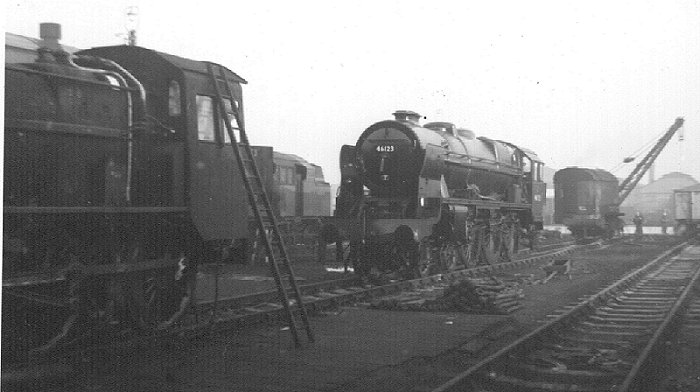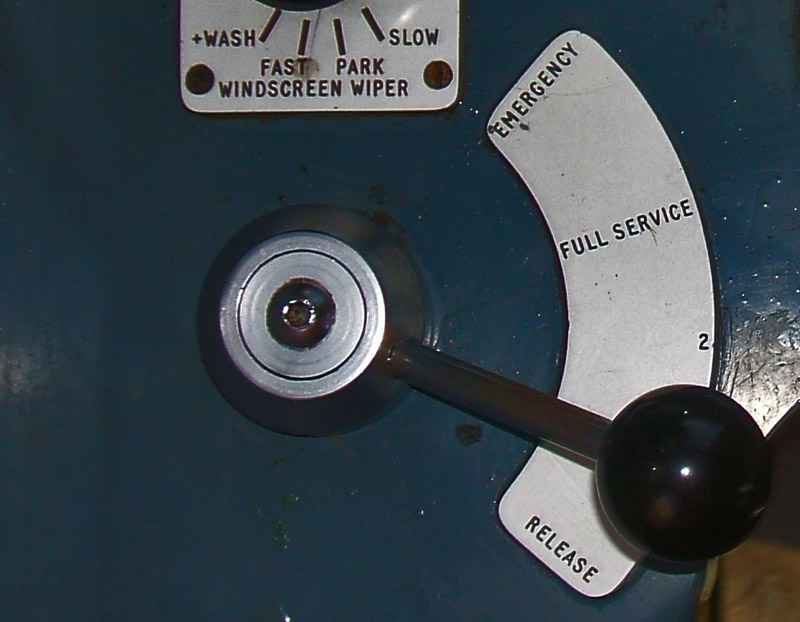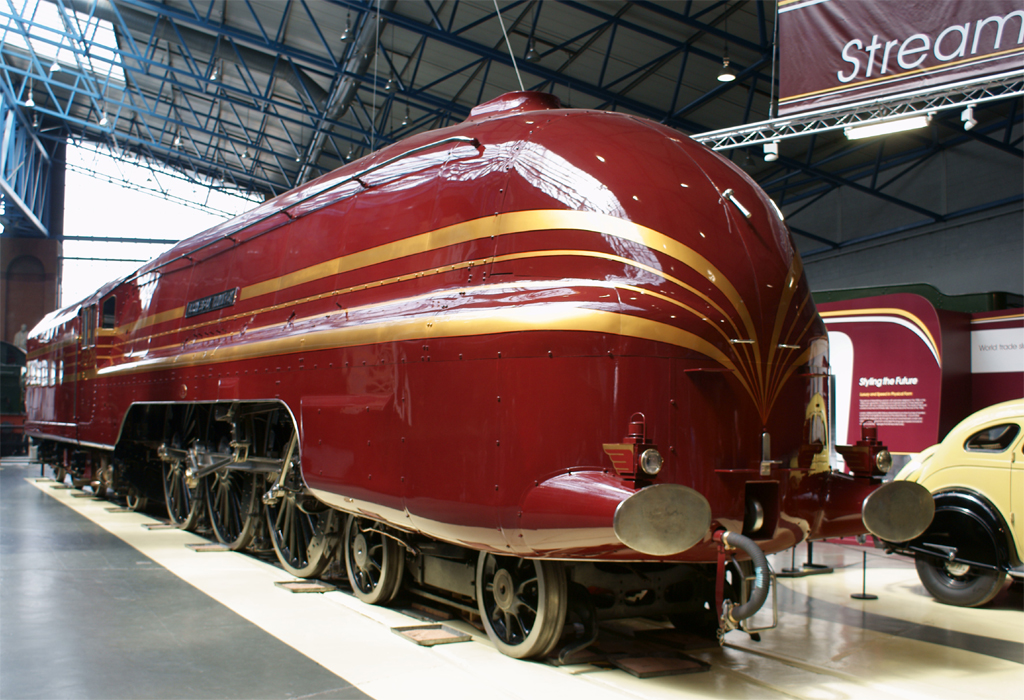|
Princess Royal Class
The London, Midland and Scottish Railway (LMS) Princess Royal Class is a class of express passenger 4-6-2 steam locomotive designed by William Stanier. Twelve examples were built at Crewe Works, between 1933 and 1935, for use on the West Coast Main Line. Two are preserved. Overview The Princesses are related to the GWR 6000 Class (also known as the King Class), the general outline essentially being a King with a larger firebox supported by additional trailing wheels. This origin is explained by the designer William Stanier coming from the GWR to the LMS. When originally built, they were used to haul the famous ''Royal Scot'' train between London Euston and Glasgow Central. Construction A prototype batch of three locomotives was to be constructed in 1933. Two were constructed as drawn but the third set of frames was retained as the basis for an experimental turbine locomotive. Turbomotive The third prototype was constructed with the aid of the Swedish Ljungstrom ... [...More Info...] [...Related Items...] OR: [Wikipedia] [Google] [Baidu] |
Crewe Works
Crewe Works is a British railway engineering facility located in the town of Crewe, Cheshire. The works, which was originally opened by the Grand Junction Railway in 1840, employed around 7,000 to 8,000 workers at its peak. In the 1980s, a lot of the engineering works were closed. Much of the site has been redeveloped but the remaining parts are owned and operated by French-owned multinational rolling stock manufacturer, Alstom SA. During the late 19th century, the London and North Western Railway used Crewe Works to produce many famous locomotives such as the Webb Jumbo class and the compounds, the Whale Experiment and Precursor classes, and the Bowen-Cooke Claughtons. In particular, Whale's 1912 superheated G1 Class developed from a locomotive introduced by Webb in 1892, lasted, in many cases until 1964, near the end of steam in 1968. After grouping, the works were taken over by London, Midland and Scottish Railway which was the successor to the LNWR. It was during ... [...More Info...] [...Related Items...] OR: [Wikipedia] [Google] [Baidu] |
Glasgow Central Railway Station
, symbol_location = gb , symbol = rail , image = Main Concourse at Glasgow Central Station.JPG , caption = The main concourse , borough = Glasgow, City of Glasgow , country = Scotland , coordinates = , grid_name = Grid reference , grid_position = , manager = Network Rail , platforms = 17 (including 2 on lower level) , code = GLC , zone = G2 , transit_authority = SPT , years = 1 August 1879 , events = High Level Station openedButt (1995), page 103 , years1 = 10 August 1896 , events1 = Low Level Station opened , years2 = 1901–1905 , events2 = High Level Station rebuilt , years3 = 1960 , events3 = Re-signalling , years4 = 5 October 1964 , events4 = Closure of Low Level Station , years5 ... [...More Info...] [...Related Items...] OR: [Wikipedia] [Google] [Baidu] |
Weedon, Northamptonshire
Weedon Bec, usually just Weedon, is a village and parish in West Northamptonshire, England. It is close to the source of the River Nene. The population of the civil parish at the 2011 census was 2,706. Geography Weedon is around southeast of Daventry, west of Northampton. It was at the crossroads of the A5 and former A45 until a bypass opened on 15 November 2018. The Grand Union Canal (1796) and West Coast Main Line both pass through the village. Lower Weedon and Upper Weedon are to the south. The northern boundary of the village follows the old A45 to the west, then south to just outside Everdon. It skirts Everdon Wood and Everdon Stubbs, and borders Stowe Nine Churches to the southeast, and lies to a short distance east of the A5 up to the A45, next to Flore parish. Demographics The 2001 census the village had a population of 2,485, 1,248 male and 1,237 female, 1,237 households and average age 38.34 years. The population at the 2011 Census was 2,706. History The ... [...More Info...] [...Related Items...] OR: [Wikipedia] [Google] [Baidu] |
Communication Cord
On trains, the expression emergency brake has several meanings: * The ''maximum'' brake force available to the engine driver from the conventional braking system, usually operated by taking the brake handle to its furthest position, through a gate mechanism, or by pushing a separate plunger in the cab. * A completely separate mechanism from the conventional braking system, designed to stop the train as quickly as possible. * A handle or plunger which may be applied by a passenger in an emergency situation, either stopping the train directly or sending an alarm to the driver so that they can stop the train. The emergency brake applies considerably more braking force than the standard full-service brake. The engine driver or motorman will only use the emergency brake as a last resort, since it may cause damage; even with modern wheel slide protection, a train may develop wheel-flats, and the rails themselves can suffer profile damage. Possible consequences of operation Putting the ... [...More Info...] [...Related Items...] OR: [Wikipedia] [Google] [Baidu] |
Harrow And Wealdstone Rail Crash
The Harrow and Wealdstone rail crash was a three-train collision at Harrow and Wealdstone station in Wealdstone, Middlesex (now Greater London) during the morning rush hour of 8 October 1952. The crash resulted in 112 deaths and 340 injuries, 88 of these being detained in hospital. It remains the worst peacetime rail crash in British history and the second deadliest overall after the Quintinshill rail disaster of 1915. An overnight express train from crashed into the rear of a local passenger train standing at a platform at the station. The wreckage blocked adjacent lines and was struck within seconds by a "double-headed" express train travelling north at . The Ministry of Transport report on the crash found that the driver of the Perth train had passed a caution signal and two danger signals before colliding with the local train. The reason for this was never established, as both the driver and the fireman of the Perth train were killed in the accident. The accident acceler ... [...More Info...] [...Related Items...] OR: [Wikipedia] [Google] [Baidu] |
Ian Allan Publishing
Ian Allan Publishing was an English publisher, established in 1942, which specialised in transport books. It was founded by Ian Allan. In 1942 Ian Allan, then working in the public relations department for the Southern Railway at Waterloo station, decided he could deal with many of the requests he received about rolling stock by collecting the information into a book. The result was his first book, ''ABC of Southern Locomotives''. This proved to be a success, contributing to the emergence of trainspotting as a popular hobby in the UK, and leading to the formation of the company.Ian Allan…the man who launched a million locospotters ''The Railway Magazine'' issue 1174 February 1999 pages 20-27 The company grew from a small producer of books for train enthusiasts and spotters to a large transport publisher. Each year it published books covering subjects such as military and civil aviation, naval and maritime topics, buses, trams, trolleybuses and steam railways, including hi ... [...More Info...] [...Related Items...] OR: [Wikipedia] [Google] [Baidu] |
Double Chimney
A double chimney (or double stack, double smokestack in American English) is a form of chimney for a steam locomotive, where the conventional single opening is duplicated, together with the blastpipe beneath it. Although the internal openings form two circles, the outside appearance is as a single elongated oval. Purpose The classic exhaust design for a steam locomotive began with Hackworth's invention of the blastpipe, placed centrally within a tall chimney. Victorian developments reduced the chimney's height, such that natural draught was no longer significant. The standard design was then a circular drumhead smokebox, with a single blastpipe nozzle leading into a chimney with a flared petticoat pipe beneath it. From the work of theorists such as W.F.M. Goss of Purdue University, and later S.O. Ell of Swindon, guidelines were developed at each locomotive works, describing how these were to be proportioned. It was recognised both that a particular diameter of chimney and bl ... [...More Info...] [...Related Items...] OR: [Wikipedia] [Google] [Baidu] |
Boiler Draught
A boiler is a closed vessel in which fluid (generally water) is heated. The fluid does not necessarily boil. The heated or vaporized fluid exits the boiler for use in various processes or heating applications, including water heating, central heating, boiler-based power generation, cooking, and sanitation. Heat sources In a fossil fuel power plant using a steam cycle for power generation, the primary heat source will be combustion of coal, oil, or natural gas. In some cases byproduct fuel such as the carbon monoxide rich offgasses of a coke battery can be burned to heat a boiler; biofuels such as bagasse, where economically available, can also be used. In a nuclear power plant, boilers called steam generators are heated by the heat produced by nuclear fission. Where a large volume of hot gas is available from some process, a heat recovery steam generator or recovery boiler can use the heat to produce steam, with little or no extra fuel consumed; such a configuration is com ... [...More Info...] [...Related Items...] OR: [Wikipedia] [Google] [Baidu] |
LMS Coronation Class
The London, Midland and Scottish Railway (LMS) Coronation Class is a class of express passenger steam locomotives designed by William Stanier. They were an enlarged and improved version of his previous design, the LMS Princess Royal Class, and on test were the most powerful steam locomotives ever used in Britain at 2,511 dbhp. The locomotives were specifically designed for power as it was intended to use them on express services between London Euston and Glasgow Central; their duties were to include the hauling of a proposed non-stop express, subsequently named the ''Coronation Scot''. The first ten locomotives of the Coronation class were built in a streamlined form in 1937 by the addition of a steel streamlined casing. Five of these ten were specifically set aside to pull the ''Coronation Scot''. Although a later batch of five unstreamlined locomotives was produced in 1938, most of the ensuing Coronation class were outshopped as streamliners. From 1944 until production ende ... [...More Info...] [...Related Items...] OR: [Wikipedia] [Google] [Baidu] |
RCTS
The Railway Correspondence and Travel Society (RCTS) is a national society founded in Cheltenham, England in 1928 to bring together those interested in rail transport and locomotives. Since 1929 the Society has published a regular journal ''The Railway Observer'' which records the current railway scene. It also has regional branches which organise meetings and trips to places of interest and an archive & library. It has published definitive multi-volume locomotive histories of the Great Western, Southern and London & North Eastern Railways, and has in progress similar works on the London, Midland & Scottish Railway and British Railways standard steam locomotives. It also has published many other historical railway books since the mid-1950s. On 2 November 2016, the RCTS become a Charitable Incorporated Organisation (CIO), registered number 1169995. Its new Archive and Library (located within the former station-master's house at Leatherhead station) was opened on 6 October 2018 ... [...More Info...] [...Related Items...] OR: [Wikipedia] [Google] [Baidu] |
Superheater
A superheater is a device used to convert saturated steam or wet steam into superheated steam or dry steam. Superheated steam is used in steam turbines for electricity generation, steam engines, and in processes such as steam reforming. There are three types of superheaters: radiant, convection, and separately fired. A superheater can vary in size from a few tens of feet to several hundred feet (a few metres to some hundred metres). Types * A radiant superheater is placed directly in radiant zone of the combustion chamber near the water wall so as to absorb heat by radiation. * A convection superheater is located in the convective zone of the furnace usually ahead of economizer (in the path of the hot flue gases). These are also called primary superheaters. * A separately fired superheater is a superheater that is placed outside the main boiler, which has its own separate combustion system. This superheater design incorporates additional burners in the area of superheater pipes ... [...More Info...] [...Related Items...] OR: [Wikipedia] [Google] [Baidu] |
LMS Turbomotive
The LMS Turbomotive was a modified LMS Princess Royal Class steam turbine locomotive designed by William Stanier and built by the London, Midland and Scottish Railway in 1935. It was inspired by the Swedish Ljungström locomotives first introduced in 1922. It used turbines instead of cylinders. It was later rebuilt as a conventional locomotive No. 46202 ''Princess Anne''. Design The locomotive chassis was constructed as the third prototype of the LMS Princess Royal Class, utilising the class frame design, and numbered 6202. The forward turbine had 18 rows of blading. Power output was at 7,060 rpm, corresponding to running at . Boiler pressure was . The turbine was designed to operate into a maximum back-pressure of , allowing a conventional double blast-pipe to provide the boiler draught, and eliminating draught fans, which always seemed to give a disproportionate amount of trouble. The reverse turbine had four rows of blades. It was engaged by a dog clutch, activated when ... [...More Info...] [...Related Items...] OR: [Wikipedia] [Google] [Baidu] |


_Central_Station%2C_Glasgow.jpg)



.jpg)

